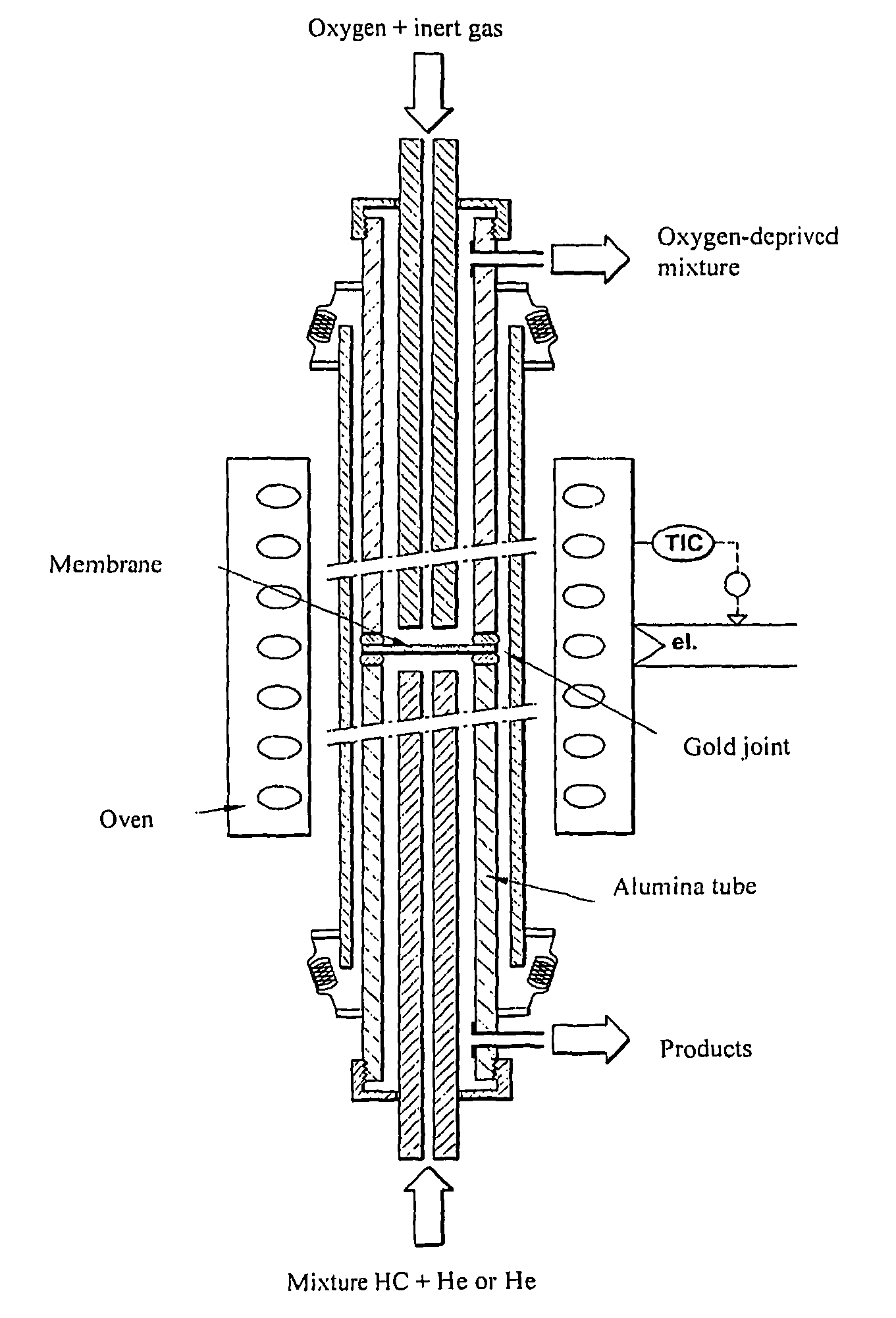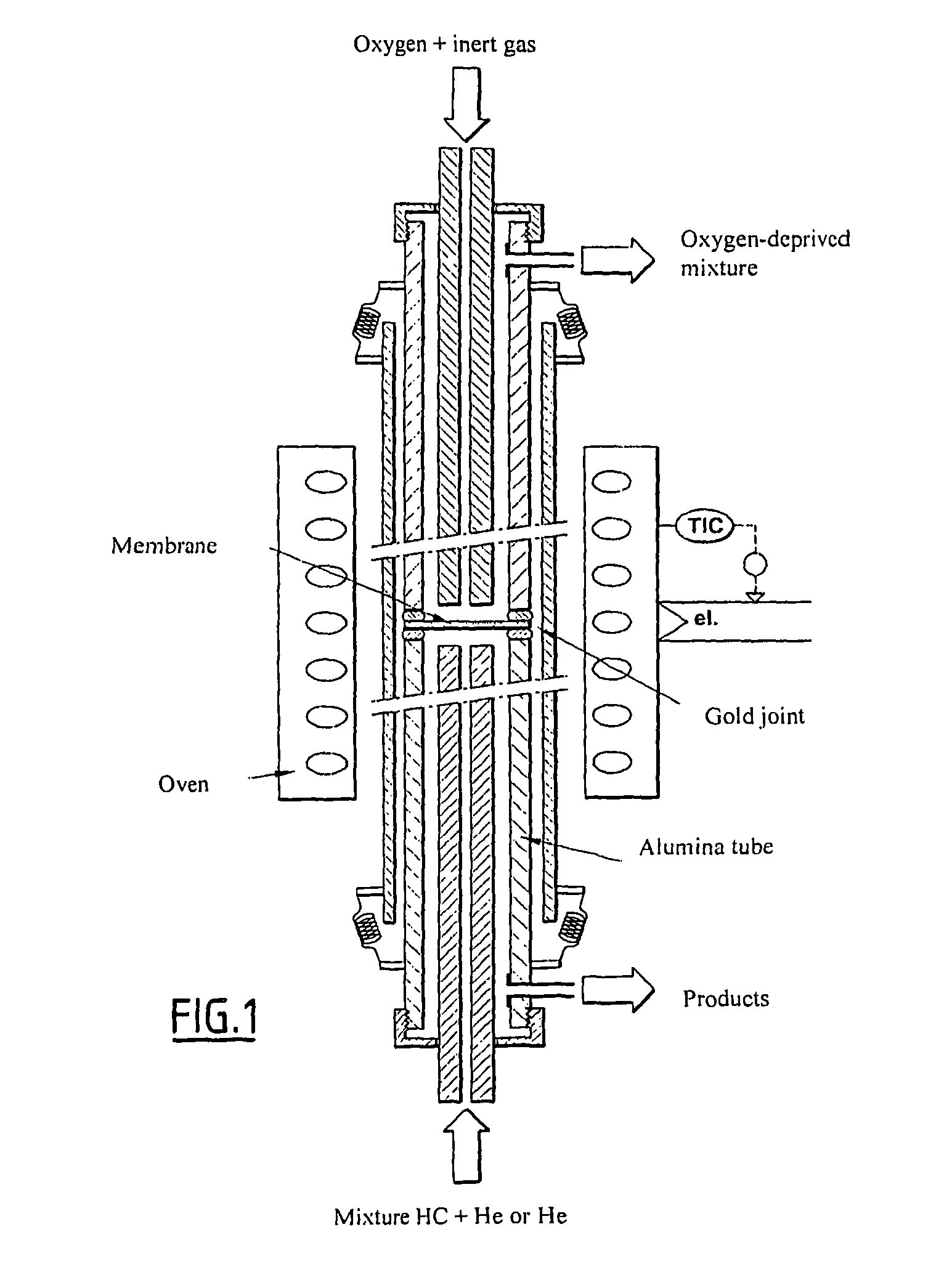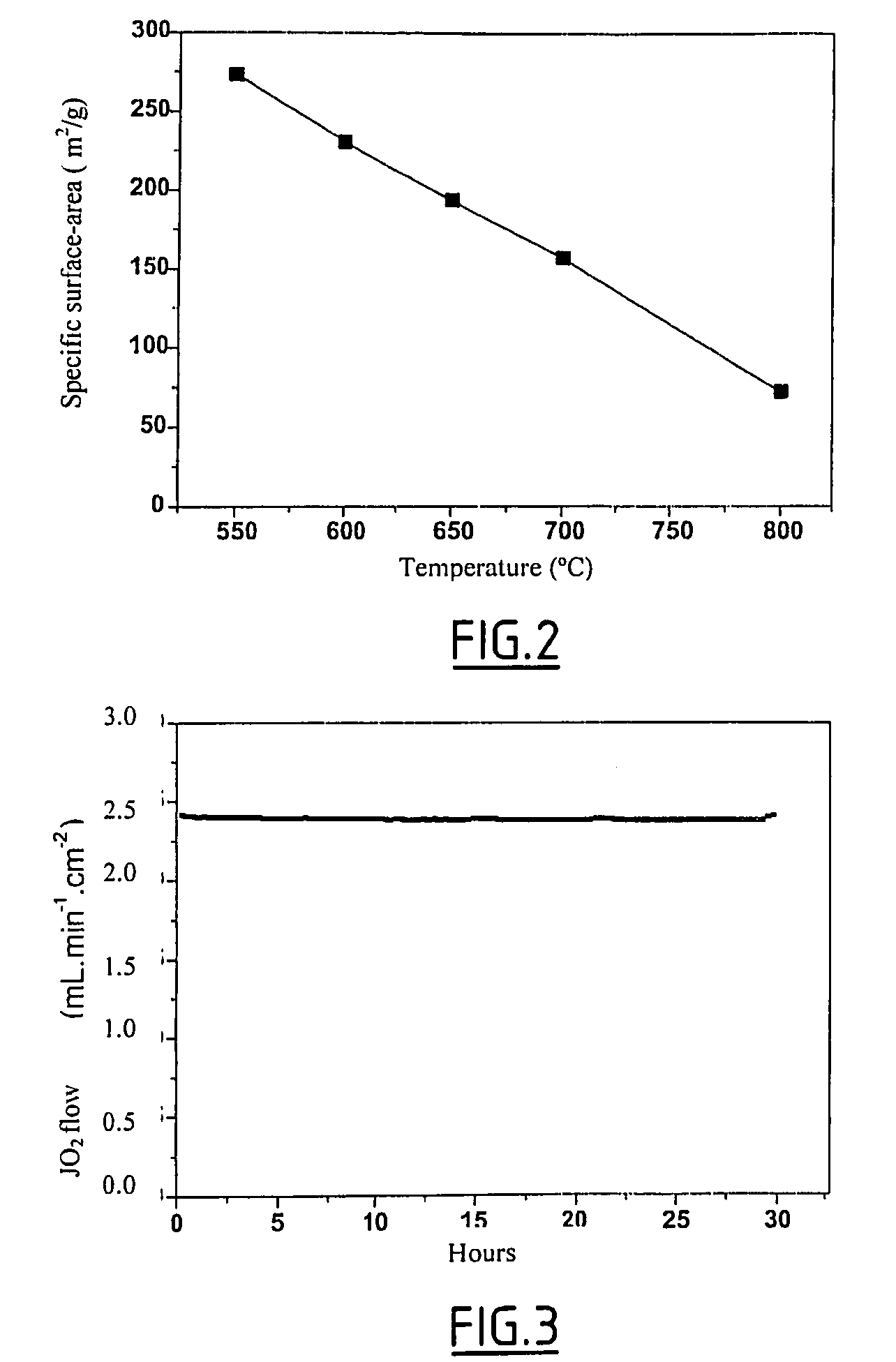Oxygen conducting membranes, preparation method thereof, and reactor and method using same
a technology of oxygen conducting membrane and conducting membrane, which is applied in the field of membranes, can solve the problems of increasing operating costs, pressure drop through the pipes of the installation, and the difficulty of industrial use of catalytic methods for oxidative dehydrogenation, and achieves low yield, specific yield, and relatively constant selectivity and conversion.
- Summary
- Abstract
- Description
- Claims
- Application Information
AI Technical Summary
Benefits of technology
Problems solved by technology
Method used
Image
Examples
example 1
Preparation of a Dense Ba0.5Sr0.5CO0.8Fe0.2O3-δ Membrane Coated with Particles of VMgO
a) Preparation of the Dense Ba0.5Sr0.5CO0.8Fe0.2O3-δ Membrane
[0208]The perovskite powder Ba0.5Sr0.5CO0.8Fe0.2O3-δ (BSCFO) was prepared using a variant of the method commonly referred to as the “citrate method”. In this method, the stochiometric quantities of Ba(NO3)2 (2.61 g; 0.5 eq), Sr(NO3)2 (2.11 g; 0.5 eq), Co(NO3)26H2O (4.65 g; 0.8 eq) and Fe(NO3)36H2O (4.05 mL of an aqueous solution at 0.988 mol / L; 8.76 g; 0.2 eq)(of purity >99.5%) were dissolved in 100 mL of distilled water followed by the addition of EDTA and citric acid at a molar ratio of perovskite, EDTA and citric acid equal to 1:1.5:3.
[0209]The violet coloured solution obtained was heated to a temperature of 100° C. until a gel-like material is obtained which is formed by evaporation of water after approximately three hours. The gel was then heated to 300° C. for three hours. The foam obtained was then calcined at 900° C. for four hour...
example 2
Preparation of a Dense BSCFO Membrane Coated with Particles of Catalyst MgO
[0219]The dense Ba0.5Sr0.5Co0.8Fe0.2O3-δ membrane is prepared in accordance with that of example 1.
[0220]The particles based on magnesium oxide were prepared using the sol-gel technique from a methanol-containing solution of Mg(OMe)2 (Epichem®) at 9.34 g / L.
[0221]1 mg of the colloidal suspension obtained was deposited on the surface of the membrane using the technique of spin-coating. The membrane was then placed directly in the reactor at 850° C.
[0222]Particles of MgO are thus obtained of 2 μm in size, which are distributed according to a density of [5.106 part / cm2 (to within 10%)] and which cover approximately 40% of the surface-area of the membrane.
example 3
Dense BSCFO Membrane Coated with Particles of Pd Catalyst
[0223]The dense membrane used is in accordance with that described in example 1.
[0224]The Pd particles were deposited at the surface of the dense membrane in accordance with the technique of laser vaporisation. The laser ablation of a Pd bar of 99.99% purity (Goodfellow) was carried out using an Nd:YAG(BMI®) laser which is pulsed at 30 Hz and doubled in terms of frequency (532 nm).
[0225]The quantity of material deposited at the surface of the membrane was determined using a quartz microbalance (INFICON®).
[0226]Particles of Pd are thus obtained which have a mean size of 2-3 nm, which are distributed according to a density of 4.1012 part / cm2, and which cover approximately 8% of the membrane (to within 2%).
[0227]FIG. 13 is an illustration of the surface of the membrane coated with dispersed particles of Pd using electron microscopy.
PUM
| Property | Measurement | Unit |
|---|---|---|
| diameter | aaaaa | aaaaa |
| diameter | aaaaa | aaaaa |
| thickness | aaaaa | aaaaa |
Abstract
Description
Claims
Application Information
 Login to View More
Login to View More - R&D
- Intellectual Property
- Life Sciences
- Materials
- Tech Scout
- Unparalleled Data Quality
- Higher Quality Content
- 60% Fewer Hallucinations
Browse by: Latest US Patents, China's latest patents, Technical Efficacy Thesaurus, Application Domain, Technology Topic, Popular Technical Reports.
© 2025 PatSnap. All rights reserved.Legal|Privacy policy|Modern Slavery Act Transparency Statement|Sitemap|About US| Contact US: help@patsnap.com



